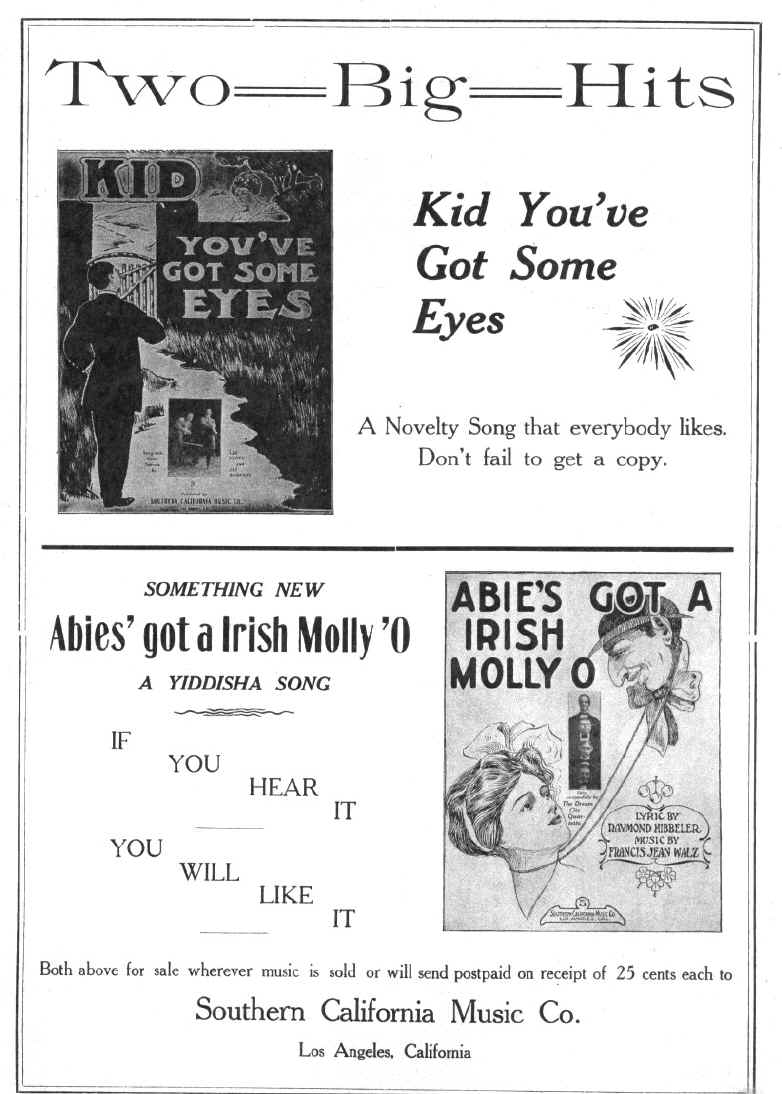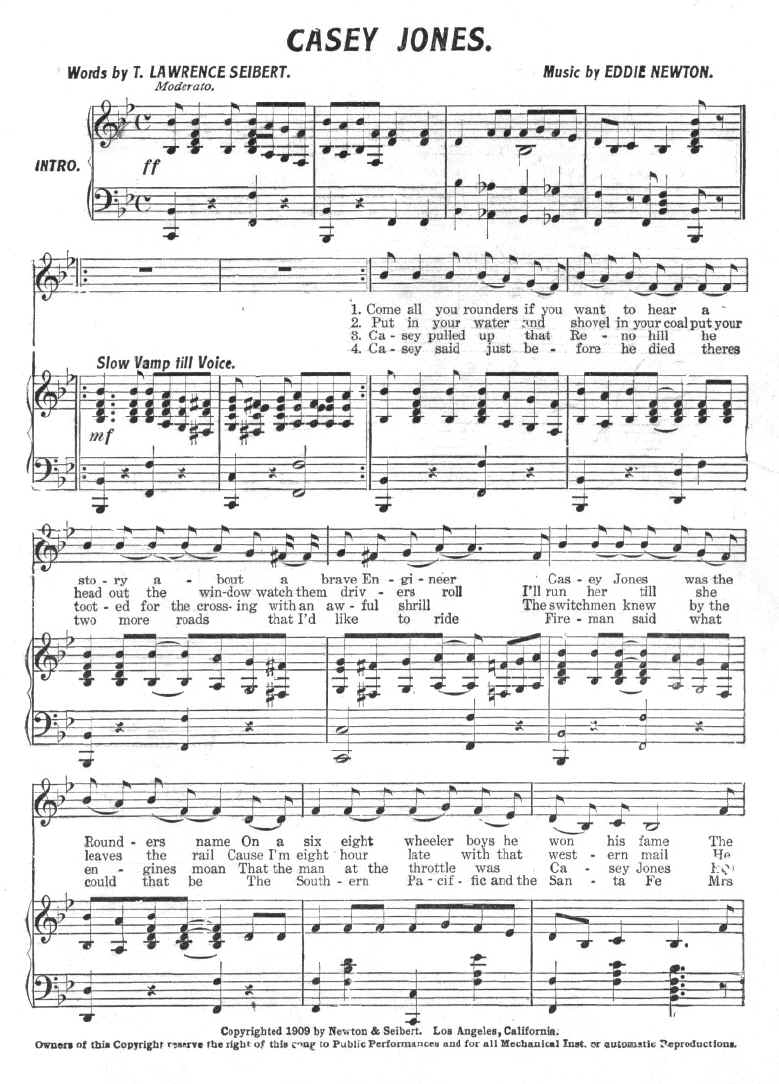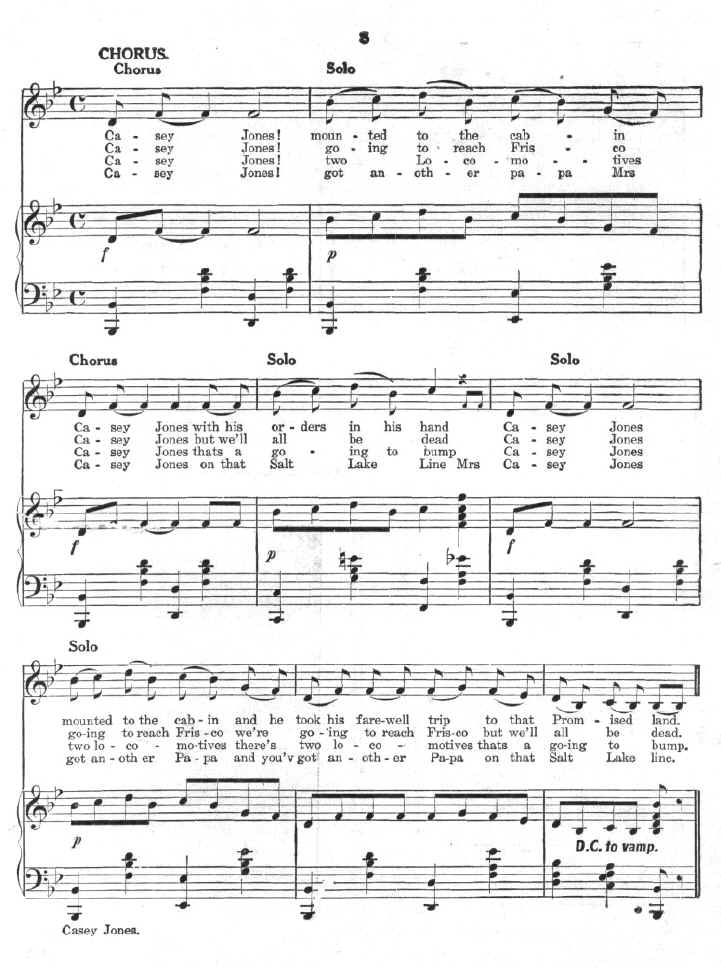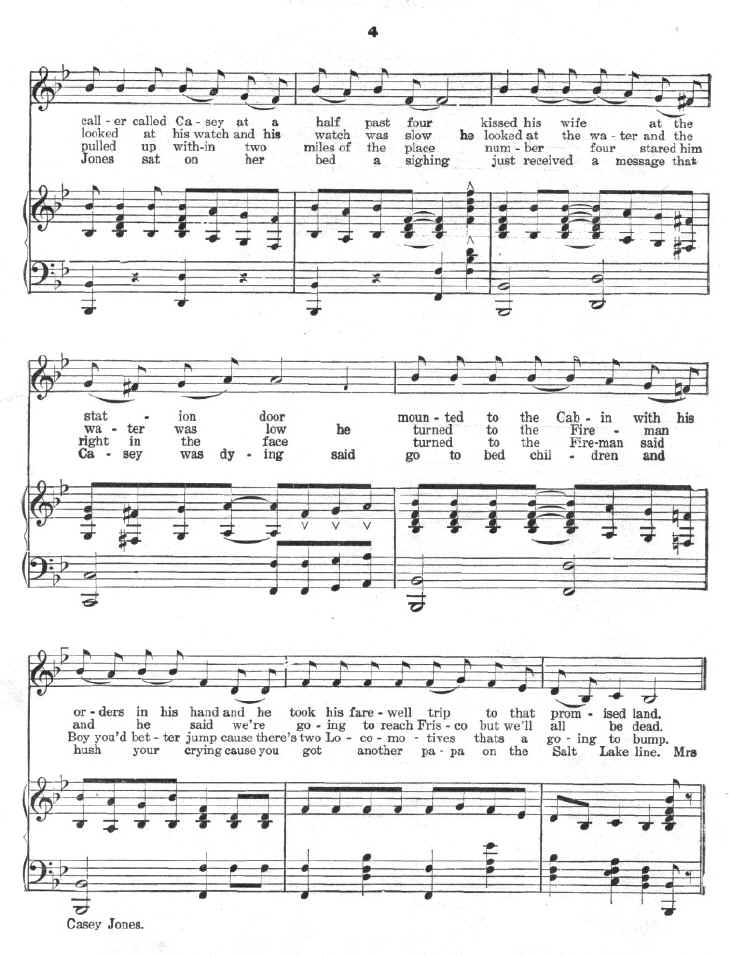
Dominic Vautier 27/2012
When Casey Jones appeared in print, Lawrence Seibert and Eddie Newton were credited with writing it. But you could make a case that they were not really the original authors. Seibert and Newton first heard the song when some railroad workers were humming it and decided it was worth a try. Railroad crews often applied this music to various catastrophes, which unfortunately happened all the time, and just used the same tune to go with each accident, substituting in any new victims' names. The song in this case referred to an unfortunate railroad engineer, one Casey Jones, who died in a train wreck several years earlier.
It was on the night of Sunday, April 29, 1900 when
hot shot engineer John Luther Jones highballed his fast cannonball express out of
Seibert write four verses using the melody he had picked up from railroad workers. Newton arranged some words around the melody. At first they had difficulty getting any publisher to look at the piece, but eventually, it became a super super big seller. So highballing Casey went highballing off into American legend while his kids "got another papa on the Salt Lake line."





back cover
